January 2015
Well, I thought last month was busy! I’m going to sound like a broken record here, but the first month of 2015 has been nothing short of crazy.
We had a tourist ship drag anchor (quite a worrying thing for a ship) due to 60+ knot winds when they had 72 passengers still ashore. The ship weighed anchor and stopped Zodiac operations until the wind dropped. That meant the 72 had to sleep in various buildings over at the museum. The builders and museum staff pulled an abnormally long shift to set up mattresses, blankets (we keep a stock for such occasions) and cook several massive pots of pasta to feed them. The passengers quietly rejoined the ship the next morning and went about the rest of their cruise. Unfortunately I didn’t get any pictures of the event. I believe most of them took it as an adventure, although a few were slightly panicky.

Going in for the kill! The Antarctic terns are back in strength now and many of the young have taken to the air. We must have had a lot of krill in the bay early in the month as there were nearly a hundred terns feeding amongst the kelp.

Not sure what he was doing here but I love the water that’s been whipped off its beak as it spun its neck round. Shame the shot is slightly out of focus.
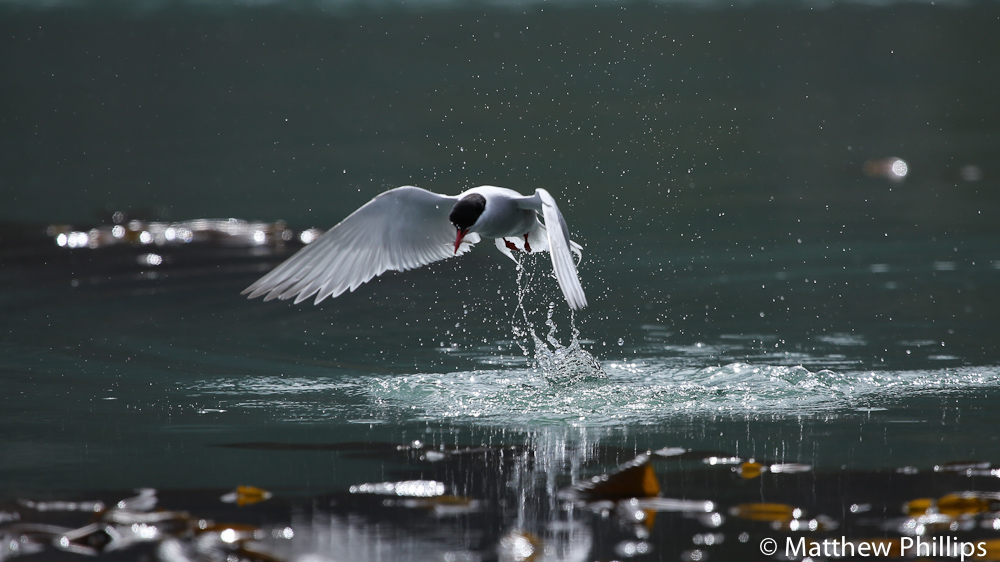
Would have liked to have caught a few more in this light and with less kelp around. Might have another chance soon.

The fur seal pups have started to explore their surroundings and have taken to the water to develop their swimming skills. Unlike elephant seals they rely on their fur to keep them warm… elephant seals rely on a healthy amount of fat.

The sub-adult fur seals spend much of their time behaving like teenage boys by engaging in half-hearted bravado and shows of aggression.

The pups’ teeth are now starting to form, this one’s mouth is fairly clean for a fur seal. The bite from an adult requires cleaning with a toothbrush and a course of two different antibiotics.

A fully grown male looking less than impressed with what the female has to say. I’ll avoid drawing comparisons with other animals.

The South Georgia pintail numbers continue to grow (not drawing from any survey but purely from what I see). This one has a thin layer of water over its head as it emerges from some bottom feeding…
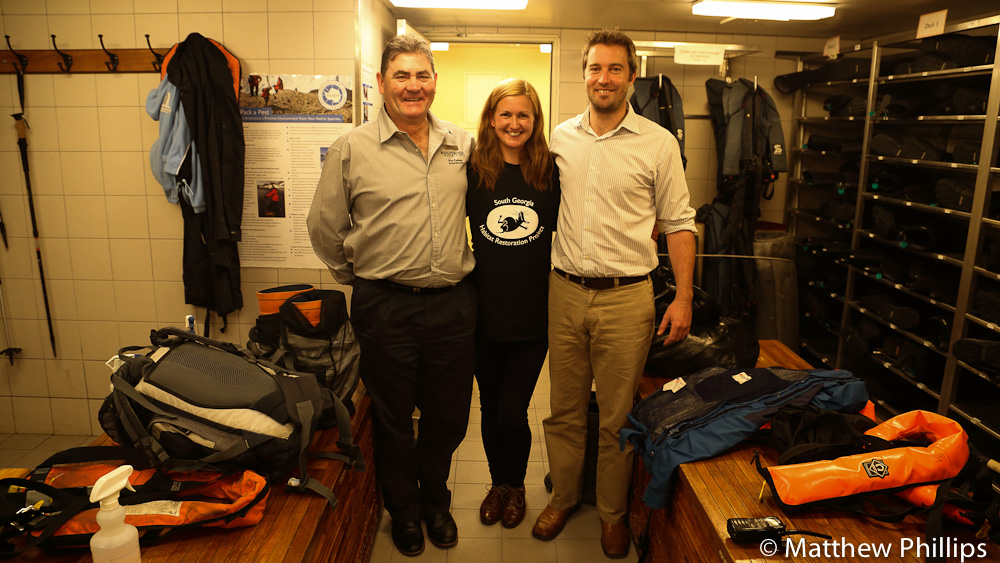
Deirdre (only other Scot on the base) acting as the rose between two thorns here. The gentleman on the left is Niall who I worked for on North Uist in Scotland’s Outer Hebrides many years ago as a sea kayak guide. It was there my powerboating went to a new level taking people out to St Kilda (80k West of the Hebrides) in a 10m commercial RIB, under Niall’s tutelage. It was Niall who offered me the job on Spirit of Adventure driving Zodiacs in the Antarctic and South Georgia in early 2009. If anyone is responsible for my polar obsession/disorder, it’s Niall.

Talking of boats, we have spent a lot of time in them this month – 69.5 hours to be precise. Which is about 16 hours more than any other month in the history of boating at KEP (according to records that I can see). The Reindeer Eradication Project has been one of the main users of the boating services this month. Last year we had eight Norwegian marksmen or ‘shooters’ as we know them, down for nearly two months working on the Barff Peninsula. The previous year the Busen Peninsula was cleared of them. Why eradicate them I hear you ask? Well, it’s partly to do with restoring the island to its original state, an opportunity very few places on the globe have a realistic chance of doing! The reindeer were introduced by Norwegian whalers in 1911 to the Barff Peninsula (and then the Busen Peninsula in 1911 and 1925) so they could get some fresh meat occasionally, and enjoy the thrill of the hunt while they were at it. The Barff Peninsula had ten reindeer introduced back then and last year the shooters shot 3,140. I’ve already seen a big difference in the landscape on the Barff Peninsula in the last year. The other reason they had to go I’ll talk about later…

Returning to base in one of the RIBs. A larger than usual tourist ships lurks outside King Edward Cove.

The Seabourn Quest is by far the largest ship (as far as tonnage and passenger numbers go) we have during the year. Nearly 450 passengers were on board. We were on at night for a meal and a few drinks. It had four bars (that I could count) and a casino. One of the better suites would cost you £40,000+ for the 17 day trip.

It’s not just elephant seal placenta the skuas like but anything that might provide a meal. This Gentoo penguin has had a lump taken out of him by a fur or maybe a leopard seal and luckily lived to tell the tale. Not sure telling the skuas is a good idea though as they smell blood!

I’m not sure if the Gentoo is calling for his kinsman or if it’s the battle cry of an animal on its last legs. A few seconds later the skua on the left managed to get a hold of his flipper and drag him to the ground while the one on the right took a nibble of the wound. The Gentoo managed to escape the last I saw… but for how long I don’t know.

Having finally received some good summer weather, James, Emma, Katie and myself decided to walk up Mt Duse after work one night. There is a fairly famous photo taken while Shackleton was here in 1915. I was going to try to recreate it but the cloud put an end to that. Still looks quite atmospheric though.

By the time I’d scrambled to the real summit the cloud had passed… typical. Still, I shouldn’t complain about a view like that. That’s King Edward Point down at the bottom with Gull Lake between us as the western end of the Allardyce Mountains beyond.

Not the most spacious peak around but well worth the view. Moraine Fjord and Mt Paget beyond in this shot.

In the middle of the month a small team headed over to Maiviken to conduct the first of three monthly fur seal pup weighings. I’ve been asked not to put photos up of the actual weighing on here – I guess so it doesn’t upset the die-hard animal rights activists. Erny looking menacing eating his crisps during lunch. The walking sticks and broom sticks are ‘bodgers’. They are helpful when walking but even more so when it comes to warding off larger fur seals.

The first 2015 fur seal pup weighing team after successfully weighing 100 of the feisty little beggars. The 100 ranged in weight between 6 and 12 kgs. There is another weigh-in next month and then March. Last year, by the last weighing the bigger pups were in-excess of 20kg’s!

ARGHHH look at all those people on MY island! Walking from Maiviken to Grytviken is quite popular with some tourist ships and their passengers, though I’m sure the picture in the brochure isn’t like this one! On our way back we caught up with some at Deadman’s Cairn. It was like something from a horror movie.

Lots of good weather made all the boating this month rather pleasant. This time we were off to pick up a couple of visiting scientists (Anne and Arwyn) from Sorling. They had spent a few days at the edge of the Nordenskjold Glacier taking ice core samples.

This could almost be a front cover shot for Powerboat Monthly magazine… if it wasn’t for the wash of the jet boat in the bottom left of the shot and the two ugly mugs in the RIB… Only joking Ray and Adam!

Once we picked Anne and Arwyn up we took them to the front of the glacier so they could collect water samples from 1, 5 and 10 meters below the surface. The idea is to collect samples from close in (amongst the melt water from the glacier) and further out in the bay where it’s not mixed. They are looking for bacteria in the water. Glacial water tends to have about one million bacteria per ml where as the water at home (UK) can have anything between one hundred thousand and ten million per ml. The RIB is a small black and orange dot in the far left of the shot here – helps give some scale to the front of the glacier.

The 17th of January marked 240 years since captain Cook discovered South Georgia and claimed it for Great Britain. We celebrated by having pizza, cake and a pub quiz… as you might expect?! Two of our current visitors are here killing invasive plants and took the lead on the pizzas… I must admit they are better than mine, but I think one of them had been taught by an Italian pizza chef. They made an ‘Eradication’ pizza that was topped with reindeer and bittercress.
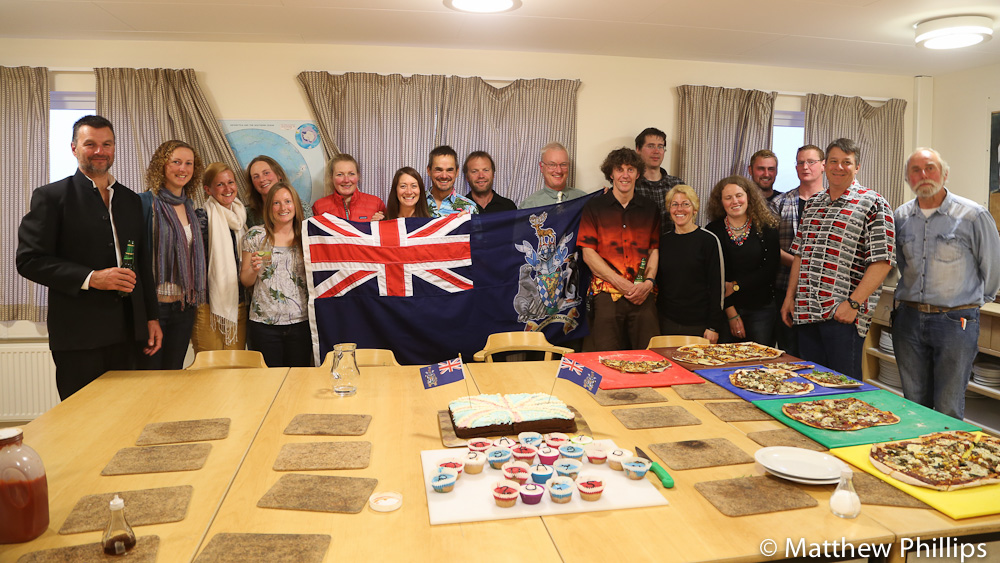
Here we all are (well most of the people on the island) with the SG flag. A few new faces here…from left to right – Brad (here killing invasive weeds), Steph, Deirdre, Emma, Katie, Sarah L, Sarah B, Simon, Kelvin (the other weed killer), Pat, Ian, Arwyn (mentioned earlier), Sheri, Anne (mentioned earlier), Mark and Micky (builders), Chris (working on the seismic station) and Ray.

Here’s the pub quiz in full swing. I didn’t win… only because I was the quizmaster, you understand. The quiz got progressively harder as the evening went on. That’s probably because my speech became slightly slurry as the night wore on…

That’s the first plane I’ve seen in 14 months! We don’t even get the ones at 30,000 feet that leave contrails behind. The military fly over SG every now and then, we don’t always get notified about it but we had a few minutes notice this time as they contacted us on the VHF. I hear the MOD had the Bird Island lot take a picture of it off their BAS monthly blog, so it might disappear from mine soon…

We had three extended boating trips this month. Two to St Andrews and one to Stromness. The second one to St Andrews didn’t work out as planned. One of the RIB engines developed a fault halfway there so we decided to tow her back to base and abort the trip. An extended boating trip is anything that involves leaving Cumberland Bay(s) and needs prior permission from BAS HQ in Cambridge.

A couple more visiting scientists (Corwyn and Andrew) were here for a few weeks releasing weather balloons. Each one had a GPS unit that will track its progress. I believe the first one hit the Pharos and then plummeted into King Edward Cove.

Another day another tourist ship. This day might just mark the height of summer. I say that because it was 22.5 degrees! Yes 22.5 degrees Celsius… That meant it was warmer here than Hong Kong or Beirut! I’m glad it was a Saturday and not midweek, which was largely spent fixing engines. There was more than one person looking a little red by the end of the day!

The night before the Pharos departed for the Falklands with some of our recent visitors we had a BBQ down in the ship’s hold to celebrate Captain Ken’s birthday and imminent retirement, as well as the end of the Reindeer Eradication Project. We think with all the BAS, government, shooters, visiting scientists and the Pharos crew there were 67 people attending! Only a few months ago there were 7 of us on the entire island!

Tord and Petre, the two shooters, gave the project co-ordinator Jen a hip flask and two ‘shot glasses’ they used in the field when they shot the last of the reindeer. They found 45 this year and it’s thought that is the last of them… During the various phases of the project the shooters shot a total of 6,749 reindeer! They used about 1.01 bullets per reindeer – talk about ruthless efficiency. One claims to have killed three with one shot by going through daddy and into pregnant mummy… Take that Rudolph!

The Hans Hansson was in for a brief visit and to take Katie away. The HH is also used by the BBC whenever they film in this part of the world. She was used for the BBC’s ‘Frozen Planet’ and the kids favourite ‘Deadly 60’ last year. She’s not the biggest but she will handle winds of Force 12 and 9m swells…. Or she did on the way back to the Falklands this time!
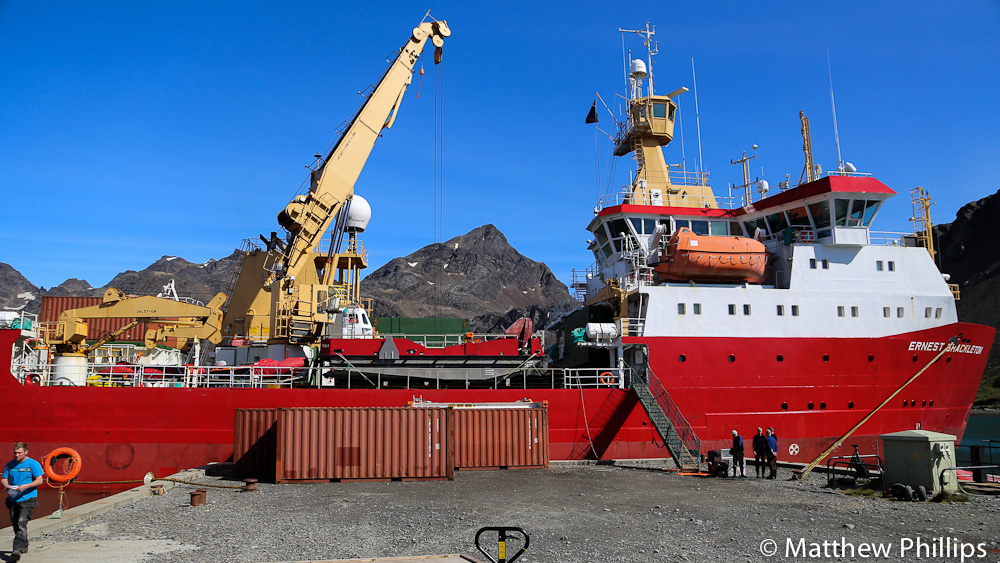
The end of the month saw the arrival of the BAS ship Ernest Shackleton which is here on charter with the South Georgia Heritage Trust (SGHT) Rat Eradication Project. She unloaded all the ‘Ratties’ kit and will be helping depot fuel and bait down the east end of the island for ten days or so before the actual baiting begins. This is the other reason the Reindeer had to go… You can’t get rid of one of them without the other. The reindeer could potentially eat the rat bait and allow a window of opportunity for rats to survive. The rat project has had a fair amount of publicity over the years, most recently on the BBC news I hear, but the reindeer project has been very quiet. I guess it’s okay to make a song and dance about killing rats but not about blowing Rudolf’s brains out! That’s politics for you.

One of three helicopters that will do all the pax movements and baiting for the project over the next 1-3 months. No one knows how long phase 3 of the project will take as they can be grounded due to bad weather etc. I have started a ‘book’ on when the last bait will be dropped. I’ve gone for the 19th of March. Prof Tony Martin (Project Co-ordinator) thinks with ten good flying days they could have it all done! I’d imagine next month’s post will largely be taken up by the project’s progress.

The wreck of the Bayard in Ocean Harbour (on the way to St Andrews Bay) is in remarkable condition considering it’s been there since 1911, after it was blown across the Bay and onto the rocks during a gale. She was built in Liverpool in 1864 and was used as a coaling hulk. Iron hulled sailing vessels like this were cheap pre-World War I. There is some left-over machinery from the whaling station days as well (just out of shot here unfortunately). The blue eyed shags love the deck of the Bayard for nesting. I guess the rats can’t get on board!
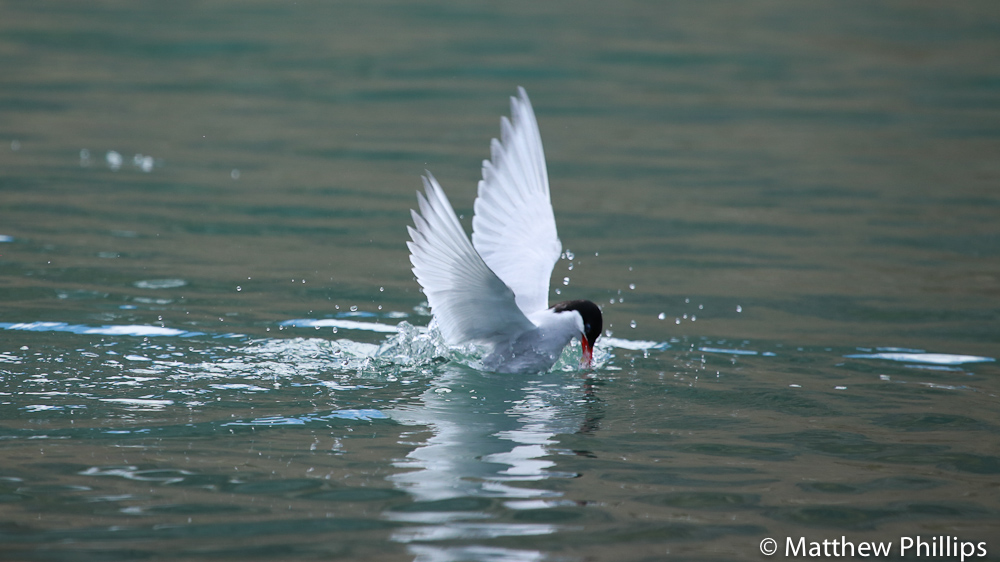
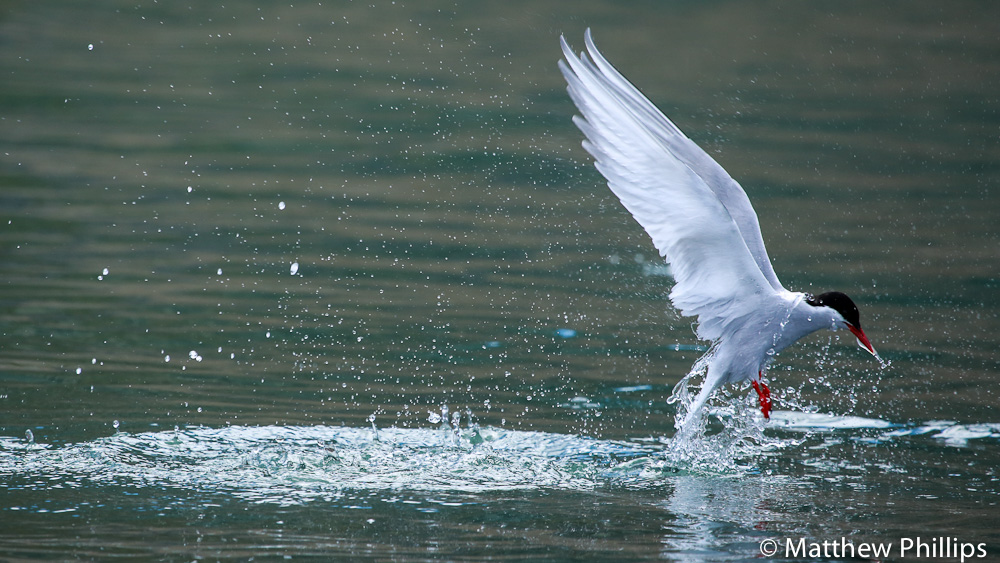
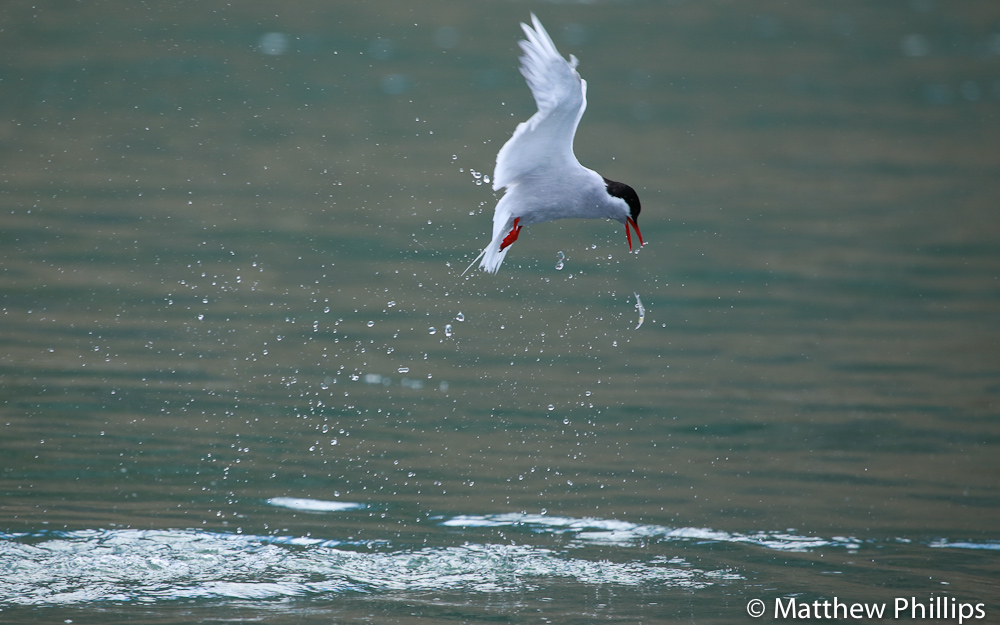
 Follow
Follow
